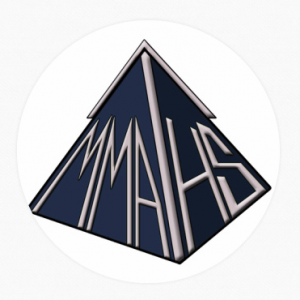A Beautiful Saturday Morning

On the morning of prom, most girls would go to the salon to get their hair and makeup done, but that was not the case for thirteen SHA students. These ladies got up in the morning, some doing their hair and makeup before the competition, and headed straight to Yale University in New Haven at 9 a.m. to compete in the Yale’s Math Majors of America Tournament for High Schools (MMATHS). Though it may not seem like a fun way to spend a Saturday morning, it was a really interesting experience. If there is anything that shows true passion for math, it would be participating in this competition (though I also give credit to those that took the ACT tests that day, too!).
In this challenge, participants had to complete three rounds of testing. The first part of the challenge was the team round, where each school team had one hour and thirty minutes to complete nine sets of three questions. Our school sent three teams, each with four or five students. Even though three problems may not seem a lot, they often involved math that some students could not even recognize. Despite the fact that the problems started off challenging and became increasingly more difficult as the competition progressed, the SHA girls persevered through each problem by using the most important technique Mrs. Gniadek has taught us: GRIT.
The second round, or the individual round of the competition, consisted of a series of twelve questions with an allocated ninety minutes. These questions ranged from problems that could be solved with critical thinking to questions that required much more complicated methods. During this test, calculators and teamwork were not allowed. One could hear pencils scribbling all over the paper as over one hundred students competing worked tirelessly.
There was also a guest speaker at the competition. Expii is a YouTuber who creates math tutoring videos to help students become interested in math and help them understand its practical aspects. Using the examples of flipping a penny and trying to catch the bus by taking the back alley and using Pythagorean Theorem, he showed math in a new light as something we could use regularly in every day situations.
At the tiebreaker round, the twelve students who had the highest scores of the individual round competed against each other to determine the final rankings. These students were also qualified to participate in the next competition in states. The others who did not qualify instead went on to the mixer round. The mixer round was quite interesting in the way it worked: students were randomly assigned to a team. The students in each group were from different schools and maybe even from different states. Though it seemed daunting at first, it was not as bad as I expected. Students had the chance to meet others and work on math problems together. It was comforting to know that there were others who were just as confused as I was!
After the competition, the students from Yale gave advice to those who participated in the competition in the Admission Panel. Students had the opportunity to ask questions, which was a great way for students to get to know those studying at Yale and obtain answers to specific questions related to the college admissions and decision processes.
Even though this competition required a variety of advanced math skills and a strenuous amount of work, it was definitely worthwhile. There were certainly migraine headaches afterwards, but in the end, it was an experience that will never be forgotten.

